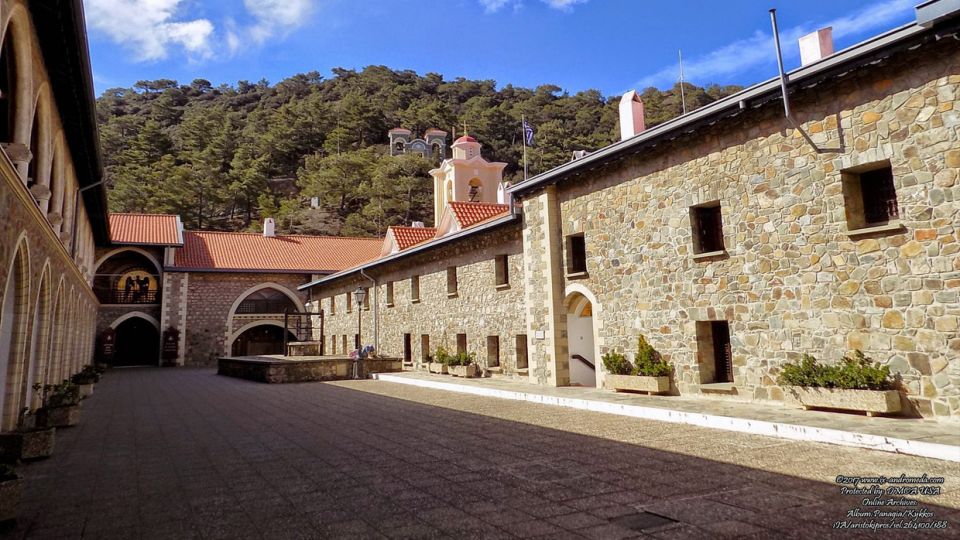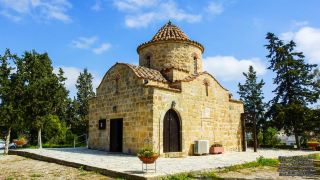The Holy Monastery of Panagia tou Kykkou is found on one of the highest mountain peaks of the mountains of Kykkos, in the forest of Troodos. It is a male monastery that was founded after a series of miracles that concerned Byzantine masters of Cyprus, as well as the Emperor Alexios Komninos himself, that happened in 1100 A.D.
Consecutive Divine interventions obliged the emperor to hand over one of the 3 icons of the Virgin, creations of the Evangelist Lucas, to a Cypriot ascetic. The ascetic returned from Constantinople with the Holy Icon in his hands and from the beaches of Cyprus, he was followed by crowds of believers to the mountains of Kykkos, where where ascetic monastery was found.
On their way towards the peak, upon the passing of the Icon, the pine trees bowed and the shellfish of the sea followed the procession. Until today, you will see that on the journey from the sea towards the peak of Kykkos, the trees will bow and the shellfish will be in the rocks.
The Icon of Panagia tou Kykkou, or “Maria tis vrochis” (Maria of the rain), is probably the greatest pilgrim for all the Orthodox Christians, after the pilgrim at the Holy Places. Ever since 1200 A.D., when the Miracles of Panagia tou Kykkou through her Icon became known, thousands of pilgrims visit her. For most of them, the completion of the pilgrimage at the Holy Places only ends after a visit at the monastery.
The throng at the “courtyard” of Panagia tou Kykkou goes on from the first daylight until the last one. To facilitate the believers, the Monastery has accommodation that is offered free of charge.
Kykkos Monastery, apart from its theological action, held Hellenism on the island, and this is not an exaggeration. During the toughest years that Cypriot Hellenism went through, at the times of the Ottoman Empire, the Monastery was the main pylon of economic support of the people. It had many dependencies in different areas of Cyprus that gathered great areas of land around them which they then conceded to the villagers, so as to cultivate necessary crops for their survival.
The charity and Christian acts of the Monastery go on still today, with no interruption.




